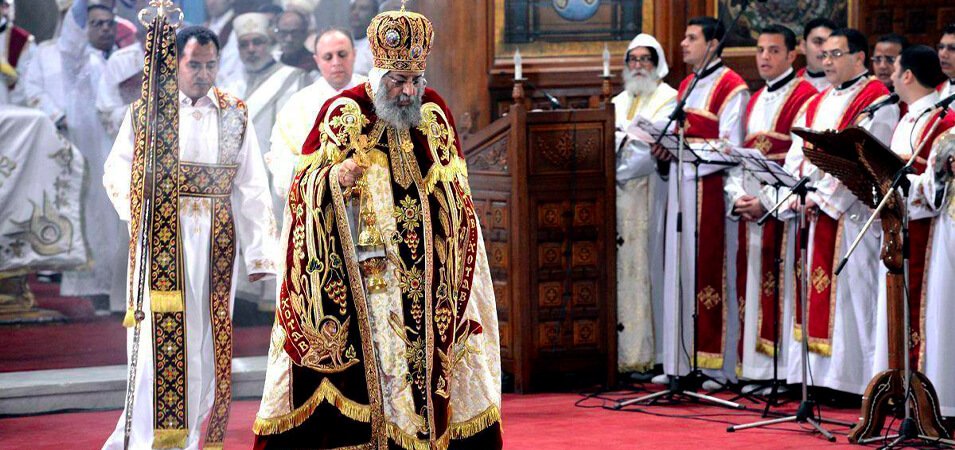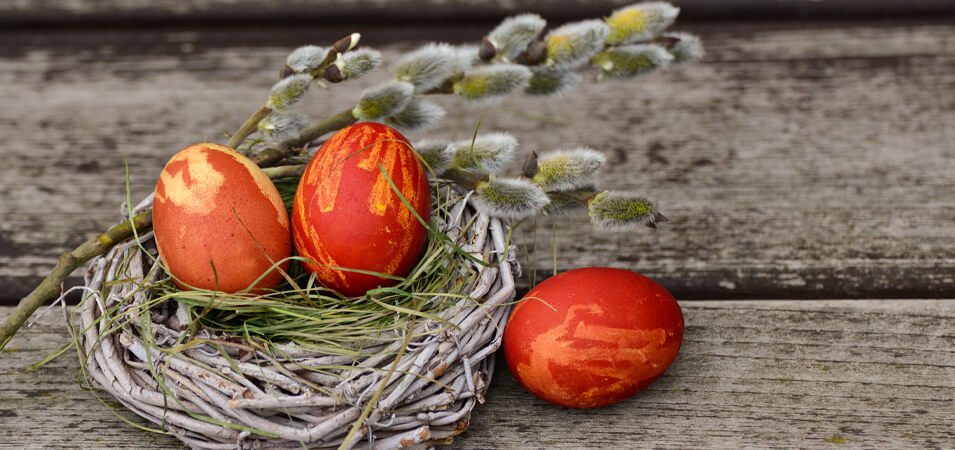Easter is one of Christianity’s most significant celebrations, marking the resurrection of Jesus Christ and symbolizing renewal and joy. The date varies each year, falling on the first Sunday after the first full moon following the spring equinox.In Egypt, Easter takes on a unique cultural and religious significance, blending ancient traditions with Christian observances.
Particularly among Coptic Christians, Easter is celebrated with deep reverence and distinctive rituals. The Coptic Orthodox Church observes a 55-day period of fasting before the Feast of the Resurrection, a time marked by solemn liturgies, joyful celebrations, and festive feasts. This article delves into the rich history of Easter in Egypt, exploring its Christian roots and its connections to the country’s ancient traditions.
Understanding Easter in Egypt’s Context
Easter in Egypt is a unique blend of religious significance and ancient traditions, shaped by both Christianity and Egypt’s pre-Christian heritage. While Easter is a Christian celebration marking the resurrection of Jesus Christ, its roots in Egyptian culture stretch back to ancient festivals that celebrated renewal, fertility, and the cycle of life. Today, Easter in Egypt is not just a religious observance but a celebration deeply intertwined with the country’s history and cultural identity.
Roots in Ancient Egypt
Before the arrival of Christianity, ancient Egyptians celebrated the arrival of spring with festivals that honored the rejuvenation of life. One such festival was Sham El-Nessim, which dates back over 4,000 years. Although not connected directly to Easter, Sham El-Nessim shares symbolic themes of rebirth and renewal that echo in the Christian celebration of resurrection.
Key Themes of Sham El-Nessim:
- Renewal & Rebirth: Sham El-Nessim marks the start of spring and is rooted in the idea of life returning with the changing season.
- The symbolism of Fertility: The consumption of feseekh (salted fish) and green onions during the festival symbolizes fertility and the cycle of nature, themes also central to Easter.
While Sham El-Nessim and Easter are distinct, the themes of resurrection, renewal, and the rejuvenation of nature connect the two festivals, reflecting the deep cultural resonance of these symbols in Egypt.

Easter in Coptic Christianity
For Coptic Christians, Easter is the highest religious celebration of the year, symbolizing Christ’s victory over death. The Coptic Orthodox Church, which follows the ancient Julian calendar, celebrates Easter on a different date than Western Christian traditions that use the Gregorian calendar. This results in Coptic Easter being celebrated up to a month later than its Western counterpart.
Easter in the Coptic Orthodox Church follows 55 days of fasting, known as Fasika, which leads to the joyful celebration of the Resurrection on Easter Sunday. The fast culminates with a midnight mass, during which worshippers chant hymns, light candles, and partake in communal prayers. The focus of this observance is on spiritual renewal and the triumph of life over death, echoing the themes of resurrection that have long been part of Egyptian culture.
The Spiritual Journey to Easter
Easter in Egypt is the culmination of a spiritual journey that spans several weeks, marked by fasting, prayer, and reflection. For Coptic Christians, this journey begins with Lent and intensifies during Holy Week, ultimately leading to the joyful celebration of Christ’s resurrection.
Lent and Fasting in the Coptic Church
Lent (Fasika) is a 55-day period of fasting and spiritual preparation before Easter. Copts fast from animal products, consuming only plant-based foods. This act of self-denial is meant to purify the soul and reflect on Christ’s 40 days of fasting in the wilderness. Fasting is not only about abstaining from food but also about prayer, charity, and self-reflection, fostering a deeper connection with God.
Palm Sunday and Holy Week
Holy Week begins with Palm Sunday, commemorating Christ’s entry into Jerusalem. The week progresses with several key events:
- Maundy Thursday: Copts remember the Last Supper and the washing of feet, symbolizing humility.
- Good Friday: A day of mourning for Christ’s crucifixion, marked by somber services and the veneration of the cross.
- Holy Friday Procession: A unique ritual where the faithful carry a wooden cross around the church, symbolizing Christ’s journey to Calvary.
- Holy Saturday Night: The mood shifts to joy as the Paschal Candle is lit, proclaiming “Christ is risen!”
The journey through Lent and Holy Week prepares Coptic Christians spiritually, leading them to embrace the joy and hope of Easter.
Sham El-Nessim – Egypt’s Unique Spring Celebration
Sham El-Nessim is a distinctive and vibrant Egyptian festival that bridges ancient traditions with modern-day celebrations. Though not directly linked to Christian Easter, it shares themes of renewal and rebirth, making it a natural complement to the festive mood that surrounds Easter in Egypt. The festival, which falls on the day after Coptic Orthodox Easter, offers Egyptians an additional opportunity to gather with loved ones and celebrate the arrival of spring.
Origins of Sham El-Nessim
Sham El-Nessim’s origins stretch back over 4,000 years to ancient Egypt, where it began as a Pharaonic spring festival celebrating the flooding of the Nile River. The Nile’s annual inundation brought fertility to the land, ensuring a successful harvest. The festival was dedicated to gods like Hathor (goddess of fertility and motherhood) and Amun-Ra (the sun god), with rituals focused on honoring these deities and celebrating the renewal of life.
Originally a religious observance, Sham El-Nessim evolved over time into a secular national holiday embraced by Egyptians of all faiths. Today, the holiday transcends its religious roots, symbolizing the rejuvenation of life and nature. It has become a time for all Egyptians—whether Muslim, Christian, or secular—to gather in celebration of the changing season.
Celebrating Sham El-Nessim Today
Modern celebrations of Sham El-Nessim blend traditional customs with contemporary leisure activities. The central tradition remains the same: outdoor picnicking. Families and friends flock to public parks, beaches, and gardens to enjoy the spring weather, connect with nature, and celebrate the renewal of life.
Key Elements of Sham El-Nessim Celebrations:
- Feseekh: A traditional dish of salted, fermented fish, served with green onions and bread. This food symbolizes Egypt’s agricultural past and the rejuvenation brought by the spring season.
- Kite Flying: A popular activity during Sham El-Nessim, where people of all ages fly brightly colored kites. This joyful tradition symbolizes freedom and the soaring spirit of renewal.
- Visiting Parks & Gardens: Egyptians often visit parks and public gardens to enjoy nature’s blossoming beauty, reinforcing the festival’s theme of rebirth.
Sham El-Nessim is a celebration of life and community. The customs of picnicking, eating symbolic foods, and flying kites all echo the ancient themes of fertility and renewal. Though secular in nature, the festival fosters a sense of spiritual rejuvenation, much like the Christian Easter, and serves as a reminder of Egypt’s enduring cultural heritage and the ongoing cycle of life.
Popular Foods and Culinary Traditions
Food plays a central role in Easter celebrations in Egypt, with meals reflecting both religious significance and cultural traditions. These dishes, enjoyed during Easter Sunday feasts and Sham El-Nessim, highlight themes of renewal, abundance, and spiritual rebirth.

Traditional Coptic Dishes
- Lamb: Roasted lamb is the centerpiece of the Easter feast, symbolizing both sacrifice and renewal. It represents Christ, the “Lamb of God,” and marks the end of the Lenten fast, celebrating abundance with flavorful herbs and spices.
- Mahshi (Stuffed Vegetables): Zucchini, eggplant, and grape leaves stuffed with rice, herbs, and sometimes meat, symbolize fertility and nature’s bounty. The act of stuffing the vegetables represents the fullness of life.
- Special Easter Bread (Ka’k): This round or oval bread, often filled with dates or nuts and topped with sugar, symbolizes Christ’s eternal resurrection. It’s typically made as a communal activity, fostering unity and togetherness.
These dishes reflect joy and spiritual renewal, marking both the end of Lent and the celebration of Christ’s resurrection.
Sham El-Nessim’s Iconic Foods
- Feseekh (Fermented Fish): This salted, fermented fish is a traditional Sham El-Nessim dish, symbolizing abundance and the preservation of food through seasons. Its strong flavor remains a beloved part of the holiday.
- Green Onions: Eaten with feseekh, green onions represent fertility and rejuvenation. Their crisp, pungent flavor complements the rich fish, symbolizing spring’s freshness.
- Colored Boiled Eggs: The most iconic food of Sham El-Nessim, colored eggs symbolize new life and rebirth. They are often dyed vibrant colors, especially red, and shared among family and friends, embodying the joy of spring.
These foods are a celebration of life, renewal, and Egypt’s deep cultural heritage.
Travel Tips for Experiencing Easter in Egypt
Easter in Egypt is a blend of deep religious significance and vibrant cultural festivities. Whether you’re drawn to ancient history, Coptic traditions, or the spring celebrations of Sham El-Nessim, here’s a quick guide to making the most of your visit.
Best Time to Visit
- Spring Weather: Easter falls in spring, offering mild temperatures (20-25°C / 68-77°F) ideal for sightseeing and outdoor activities.
- Sham El-Nessim: Celebrated the day after Easter, this marks the arrival of spring, with outdoor picnics and kite flying being popular activities.
- Crowds: Expect larger crowds in major cities like Cairo and Alexandria during Easter and Sham El-Nessim. Rural areas tend to be quieter, and it’s best to book accommodations early.
Top Destinations and Events
- St. Mark’s Cathedral (Cairo): Attend the midnight Easter mass at this historic site.
- The Hanging Church (Cairo): Explore one of Egypt’s oldest Coptic churches.
- Monastery of St. Anthony: For a more tranquil, spiritual Easter experience.
Sham El-Nessim Picnic Spots:
- Al-Azhar Park: Ideal for picnicking with stunning views of Cairo.
- Montazah Gardens (Alexandria): A beautiful, peaceful setting for enjoying the spring weather.
- Wadi Degla: For a more rugged outdoor experience away from the crowds.
- Luxor and Aswan: Visit Egypt’s ancient monuments, where spring weather is perfect for sightseeing.
Practical Tips for Visitors
- Crowds: Easter and Sham El-Nessim are public holidays, so expect crowds at major attractions. Arrive early for church services, as they can get crowded.
- Respect Local Customs: Dress modestly, especially in religious sites, and ask permission before taking photos. When invited to a local meal, follow etiquette (e.g., eating with your right hand).
- Transportation: Public transport can be crowded during holidays. Consider taxis or rideshare apps like Uber to navigate the busy streets.
Conclusion
Easter in Egypt is a celebration of faith, renewal, and tradition, offering visitors a unique opportunity to experience the rich cultural tapestry of this ancient land. From the solemnity of the Coptic Orthodox services in Cairo’s historic churches to the festive outdoor gatherings of Sham El-Nessim, Easter in Egypt beautifully intertwines religious devotion with joyful celebration. The culinary traditions, the iconic dishes like feseekh and lamb, and the symbolic practices surrounding food and family, all serve as vivid reminders of the country’s deep-rooted customs and the universal themes of resurrection, renewal, and hope.
Whether you find yourself amidst the grand celebrations in Cairo and Alexandria or enjoy the more tranquil, community-driven observances in rural villages, Easter in Egypt offers a profound and memorable experience for every traveler. The weather in spring, the vibrant local festivities, and the historical and spiritual significance of the holiday make it an ideal time to visit this extraordinary country.
Read more related articles:
